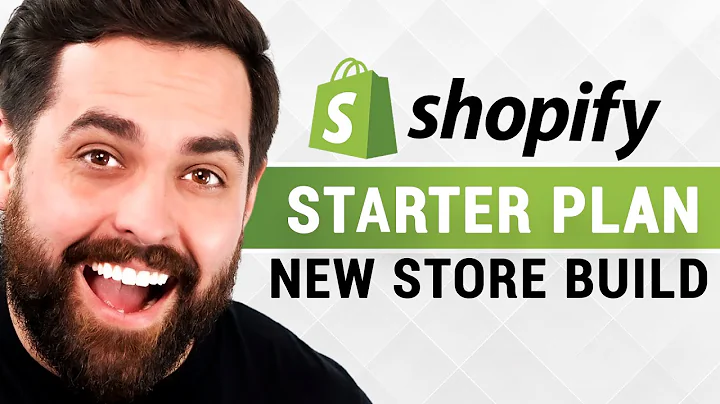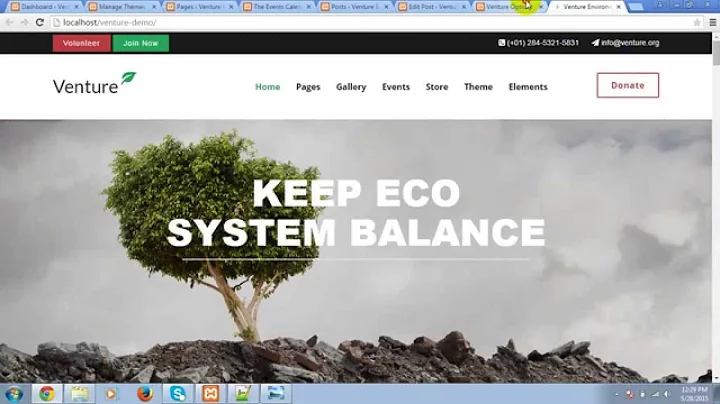Build Your Own Professional Shopify Store
Table of Contents
- Introduction
- Setting Up Shopify
- Choosing and Customizing a Theme
- Designing the Home Page
- Adding Products and Collections
- Creating Store Policies
- Editing Menus and Navigation
- Adjusting Theme Settings
- Enhancing the Product Page
- Optimizing for Mobile Devices
- Finalizing Store Settings
- Launching Your Store
Building a Professional Shopify Store from Scratch
Shopify has become one of the most popular e-commerce platforms for businesses of all sizes. With its easy-to-use interface and customizable features, it allows individuals to create professional online stores without any coding knowledge. In this tutorial, we will walk you through the step-by-step process of building a Shopify store from complete scratch. By following these instructions, you will be able to create a visually appealing and fully functional e-commerce website that is ready for launch.
Introduction
Before we dive into the details, let's first understand what Shopify is and why it is an ideal platform for creating online stores. We will also briefly discuss the benefits of using Shopify for your e-commerce business.
Setting Up Shopify
In this section, we will guide you through the process of signing up for Shopify and getting an extended trial. We will cover the account creation, choosing a store name, and selecting your country. By the end of this section, you will have your own Shopify store dashboard ready to be customized.
Choosing and Customizing a Theme
The theme of your online store plays a crucial role in attracting customers and conveying your brand image. In this section, we will explore the different themes available on Shopify and guide you in selecting an appropriate one for your store. We will also discuss how to customize the theme to match your branding and make your store visually appealing.
Designing the Home Page
The home page of your e-commerce store is the first impression you make on potential customers. In this section, we will walk you through the process of designing your home page using various sections and features offered by Shopify. We will cover adding a logo, creating an announcement bar, and setting up a hero section with engaging content.
Adding Products and Collections
No online store is complete without products and collections. In this section, we will guide you through the process of adding products to your Shopify store. We will cover creating product listings, uploading product images, and setting up inventory and pricing. Additionally, we will discuss how to organize your products into collections for easy navigation for your customers.
Creating Store Policies
To ensure a smooth shopping experience for your customers, it is essential to have well-defined store policies. In this section, we will show you how to create policies such as refund policies, terms of service, and shipping policies. We will provide you with templates that you can customize to fit your business needs.
Editing Menus and Navigation
Efficient navigation is crucial for guiding your customers through your store. In this section, we will explain how to edit the main menu and footer menu of your Shopify store. We will cover adding links to collections, pages, and policies, enabling easy access to different sections of your store.
Adjusting Theme Settings
To create a visually cohesive and branded online store, it is necessary to adjust the theme settings. In this section, we will walk you through the process of customizing the colors, typography, and logo of your store. Additionally, we will guide you in adding social media links and setting up a favicon for your website.
Enhancing the Product Page
The product page is where customers make their purchasing decisions. In this section, we will explore the different sections and blocks available for customization on the product page. We will guide you in adding content, images, and videos to showcase your products effectively.
Optimizing for Mobile Devices
As more people browse the internet on their mobile devices, it is crucial to optimize your store for mobile responsiveness. In this section, we will show you how to preview and customize the mobile version of your store. We will discuss adjusting layouts and ensuring a seamless user experience across different screen sizes.
Finalizing Store Settings
Before launching your store, there are a few backend settings that need to be reviewed and adjusted. In this section, we will cover essential details such as store name, currency, and unit settings. We will also guide you through setting up payments, shipping rates, and attaching a custom domain to your store.
Launching Your Store
Congratulations! Your Shopify store is now ready to be launched. In this final section, we will guide you through disabling password protection, testing your store's functionality, and making necessary tweaks. We will also provide tips on marketing strategies and driving traffic to your newly launched store.
By the end of this tutorial, you will have a professional Shopify store that is fully functional and ready to start generating sales. With the knowledge and skills gained from this tutorial, you can confidently navigate the world of e-commerce and establish a successful online business.






















